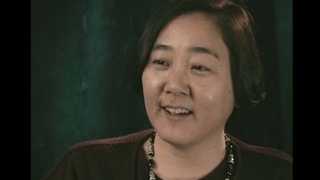Interviews
International dimensions of hapa identity
Essentially it is an American phenomena, because we do talk about this more than anywhere else. To some extent there’s Singapore has a pretty good awareness, but it’s really a Eurasian sort of conversation happening there. It’s mostly Eurasian, they don’t have the sort of Afro-Asian, the Latinos and so forth. And it’s a different kind of agenda. You know, the U.S. talks about race more than other countries do, by far. And even though they are foreigners, I wanted to talk about that.
And I actually was curious if any sort of trans-racial adoptees would participate. One person was thinking about it, but didn’t want her picture taken. [garbled] That’s an interesting way of defining it as well. And some people that weren’t—in my definition—Hapa, participated and I though that’s great, because that’s their self-identification. This woman came in, she’s black-white. She’s like, “I’m Hapa too.” I said, “Okay, let’s take your picture.”
Date: May 3, 2006
Location: California, US
Interviewer: Jim Bower
Contributed by: Watase Media Arts Center, Japanese American National Museum.
Explore More Videos

Different tension between East Coast and Los Angeles
Japanese American Creative designer living in Japan

Differences between American and Japanese taiko
(b.1943) Shin-issei grand master of taiko; founded San Francisco Taiko Dojo in 1968.

Meeting Japanese Americans from the mainland in MIS
(1923-2011) Lawyer, MIS veteran, founder of Francis and Sarah Sogi Foundation


Sudden acceptance in Japanese society
(b. 1967) Hawai`i-born professional fighter in Japan

Ring name: "Yamato Damashi"
(b. 1967) Hawai`i-born professional fighter in Japan


Citizenship and identity
(b. 1967) Hawai`i-born professional fighter in Japan

Importance of self-representation in legislation
(1927-2010) Political Activist

Defining the term Nikkei
(1923-2011) Lawyer, MIS veteran, founder of Francis and Sarah Sogi Foundation


Support from the Japanese American community
(b.1971) Professional figure skater and Olympic gold medalist.

Heightened awareness of identity as a Japanese American
(b. 1955) Lawyer

Reasons for conformity and competitiveness in Gardena, California
(b. 1946) Lawyer

